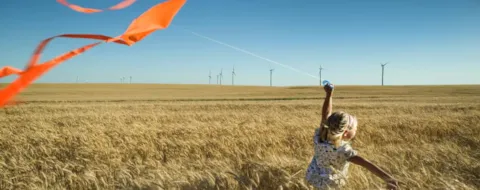Setting up a successful green energy procurement strategy
With 15 years expertise, our expert Majdouline El Aasemi produced global green energy procurement strategies and roadmap for big multinationals and negotiated physical and virtual PPA on behalf of corporate buyers in APAC, Latin America and Europe. Majdouline shares her view with us on the key elements for a successful green energy procurement strategy.
Organizations of all kinds and sizes are under pressure from their stakeholders to commit to a meaningful sustainability strategy. Naturally, energy is a big part of that, but the energy market is very complex and needs a lot of expertise to navigate effectively. Success depends on being able to define the right strategy for your needs, implement it efficiently and then continually monitor your progress.
Large organizations often have many different locations and any energy strategy, needs to meet the needs of all of them. This is particularly challenging for multinational organizations whose locations are spread around the world, in different countries with different energy markets and regulations. To be successful, a green energy strategy needs to be multi-layered: global in nature, but with local long-term goals and specific targets for each region, market and site.
Defining your green energy procurement strategy
The first step in developing a meaningful green energy procurement strategy is to understand your organization and its wider sustainability landscape. What is your desired outcome? What is your corporate appetite for risk? Where, when and how do you use electricity? In answering these questions, you need consider the needs of all internal stakeholders: headquarters, local entities, legal and financial teams, and sustainability teams.
Next you need to translate this information into realistic interim milestones. For example, your desired outcome may be to become 100% green by 2050. But given your energy usage patterns, which sites can transition and when? Similarly, how do your risk management approach and energy purchasing processes need to change to support that transition?
However, the energy market is very complex, so even deciding which questions to ask yourself can be a daunting challenge. But help is available. Third party advisors such as DNV offer workshops to help you understand your requirements and how to translate them into procurement goals.
Implementing your strategy efficiently
There are many different green electricity options including utility green tariffs, energy attribute certificates, corporate power purchasing agreements and onsite renewable energy generation.
Not all options are possible in all markets, and each option has its own pros and cons. So, you need to explore which options are feasible in each of the markets where you operate as well as which are best aligned with your sustainability and energy needs. In almost all cases, your final strategy will require a mix of these options. Finding and implementing the right blend of options takes a great deal of effort, for example to identify potential partners for each option including corporate PPA.
Monitoring and reporting your green energy progress
Monitoring is an essential element in realizing any successful strategy. Indeed, sustainability reporting is a regulatory requirement in many markets and a condition of entry for high-profile sustainability programmes like RE100 and CDP.
Each of these programmes has its own rules on monitoring and reporting, which can have a huge impact on your strategy and implementation choices. For instance, water pollution levels in specific geographies can determine whether hydropower is considered green energy or not – and different schemes often have different acceptable levels. So, make sure you understand the monitoring and reporting rules you will be subject to before you finally define your strategy, otherwise you have a very small chance of success.
A golden opportunity for sustainability
A green energy procurement strategy should be seen as an integral part of your wider sustainability strategy. As such, your energy procurement strategy decisions should be made with your organization’s sustainability outcomes in mind. Do you want to be seen as a leader in sustainable innovation? Do you want to “go green” fast? Do you want to have an impact on the communities you operate in?
Frame your green energy procurement in terms of those questions, and it becomes a way to achieve so many things. Don’t, and you risk missing out on big opportunities.
Leveraging DNV’s unique expertise in risk assessment and renewable energy technologies, our green energy procurement services support corporate energy buyers in achieving impactful green power procurement quickly, easily and transparently. Besides connecting renewable energy buyers and sellers, we offer support in risk assessment and allocation for corporate PPAs. For more information, please contact us today for more information.
